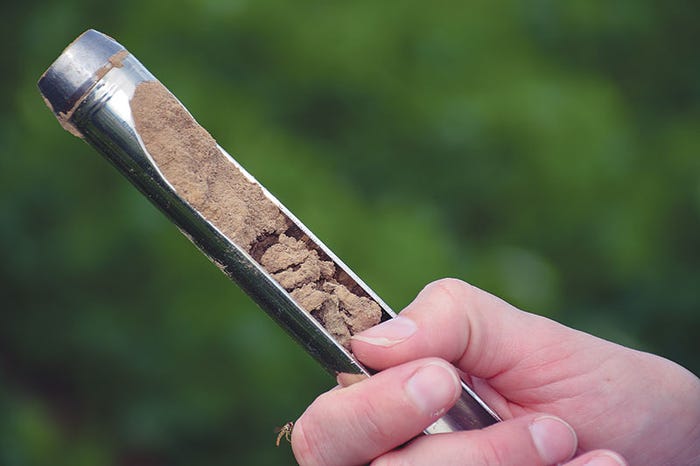
With the current volatility in soybean markets, producers can ill-afford losing 14 bushels per acre.
But many may be losing that much, or more, to a pest they can’t see and may not know is consistently eating away profits.
“We always look above ground for crop damage,” says University of Tennessee Institute of Agriculture soil pathologist Heather Kelly, stationed at the UTIA AgCenter in Jackson. “Silent killers,” Kelly said, during a presentation at the recent Milan No-Till Field Day, may be doing more damage underground than producers realize.
Soybean cyst nematodes (SCN), she explains, may be robbing farmers of 14 bushels per acre. “That’s from a one-year snapshot survey,” she says. “Over a five-year period, and continuous soybean production, populations could be higher, and producers could spend a lot of money to pull numbers down.”
See also: Here’s how to pull soil samples for soybean cyst nematodes.
Kelly initiated a trial run of screening soil samples last fall identifying SCN and charcoal rot, another pathogen capable of extensive damage and one that few farmers look for. This was in preparation for the large soil survey campaign she is running in 2018, which is available free to Tennessee farmers due to the Tennessee Soybean Promotion Board support to screen for all pathogenic nematodes and charcoal rot.
“Every field in the survey in 2017 had charcoal rot,” Kelly says. “Soybean cyst nematode infestations ranged from very high to none. We urge Tennessee producers to take advantage of our soil sample program, as well as those outside of Tennessee, which cost $15 per sample.”
She put up a chart showing recommendations for pulling SCN soil samples. She recommends fall sampling. “It’s easiest after harvest, but best before first freeze. Angle the soil probe 45 degrees to the target root zone.”
The chart also notes:
Soil should be moist.
Collect 15 to 20 1-inch diameter core samples from 6 to 8 inches deep for every 20 acres.
Place 1 quart in a ziplock/plastic, sealable bag and keep cool.
Send to testing lab for analysis. Send to: WTREC SCN Lab, Attn: Heather Kelly, 605 Airways Blvd., Jackson, Tenn. 38301
Three approaches to sample a field
Zigzag pattern
Management zones
High risk areas (But also in good production areas for comparison)
For more information on sampling and SCN visit: UTcrops.com and TheSCNcoalition.com
Kelly says SCN populations and damage vary and many times show no above-ground symptoms. “You have to sample.”

SCN life cycle includes a cyst that holds at least 200 eggs, which hatch into juveniles that feed on soybean roots. The nematodes will lay about 50 eggs outside the body and then fill up with 200 or more inside. The nematode dies and hardens off, which is the cyst. “It can survive for a long time in the soil,” Kelly says. “One cyst contains 200 eggs. In just three generations the number from that one cyst can easily increase to 40,000 or more. That’s from three conservative generations and five or six are possible.”
Rotation, she says, is the primary management tool. “Rotate to a non-host crop (Corn is a good one.). Also rotate resistant varieties (We see some differences.), and rotate nematicides and seed treatments. We want to avoid resistance,” Kelly says. Some soybean varieties do have resistance to SCN.
She says a legume cover crop following corn and between corn and soybeans may encourage SCN. Sorghum and cotton also offer good rotation options but may not fit into a farm’s production system.
Kelly says they are interested in SCN HG type shifts. “That’s another reason for the soil survey,” She says. “The last SCN soil survey was in 2008. We will try to compare HG types to those findings.”
She says charcoal rot is another “silent yield robber. Not many know about it. It loves drought.” She says symptoms usually show during reproductive growth stages. Variety selection is a key to management. “Also, employ cultural practices that avoid plant stress.”
Kelly also notes that soybean sudden death syndrome (SDS) may occur in conjunction with SCN populations. “SDS is a soil borne pathogen that causes above-ground injury. It typically infects early in the season, but symptoms won’t develop until reproductive growth stages.”
Management options include variety selections, fungicide seed treatments, delayed planting, improved drainage, and reduce SCN populations. “The combination of SDS and SCN is a double whammy,” Kelly says.
About the Author(s)
You May Also Like






